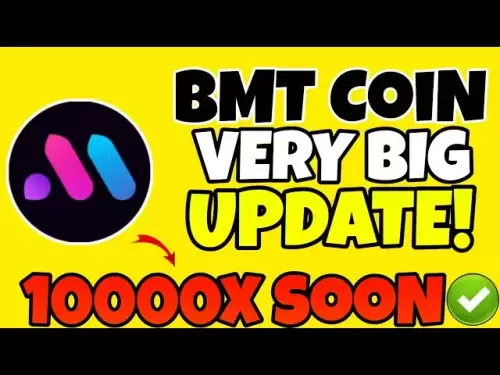-
 Bitcoin
Bitcoin $108,962.3544
0.69% -
 Ethereum
Ethereum $2,563.3189
1.78% -
 Tether USDt
Tether USDt $1.0003
0.00% -
 XRP
XRP $2.2768
2.22% -
 BNB
BNB $661.4562
0.97% -
 Solana
Solana $151.7146
2.47% -
 USDC
USDC $1.0000
0.00% -
 TRON
TRON $0.2847
0.18% -
 Dogecoin
Dogecoin $0.1713
4.43% -
 Cardano
Cardano $0.5848
1.78% -
 Hyperliquid
Hyperliquid $39.5345
-0.06% -
 Sui
Sui $2.9384
1.25% -
 Bitcoin Cash
Bitcoin Cash $492.0864
1.54% -
 Chainlink
Chainlink $13.4271
1.89% -
 UNUS SED LEO
UNUS SED LEO $9.0294
0.07% -
 Avalanche
Avalanche $18.1886
1.61% -
 Stellar
Stellar $0.2430
2.48% -
 Toncoin
Toncoin $2.9054
6.05% -
 Shiba Inu
Shiba Inu $0.0...01186
3.57% -
 Litecoin
Litecoin $88.0187
1.46% -
 Hedera
Hedera $0.1574
1.38% -
 Monero
Monero $315.1335
0.11% -
 Polkadot
Polkadot $3.3994
1.47% -
 Dai
Dai $1.0000
0.00% -
 Ethena USDe
Ethena USDe $1.0002
0.01% -
 Bitget Token
Bitget Token $4.4220
0.86% -
 Uniswap
Uniswap $7.4330
7.03% -
 Pepe
Pepe $0.0...01010
4.10% -
 Aave
Aave $277.8377
2.41% -
 Pi
Pi $0.4572
-0.22%
How to withdraw Korean won (KRW) from Upbit to a bank account?
Withdrawing KRW from Upbit to a South Korean bank account involves verifying your account, linking a bank, and initiating the transfer, which takes 1-2 business days.
Apr 14, 2025 at 02:56 am
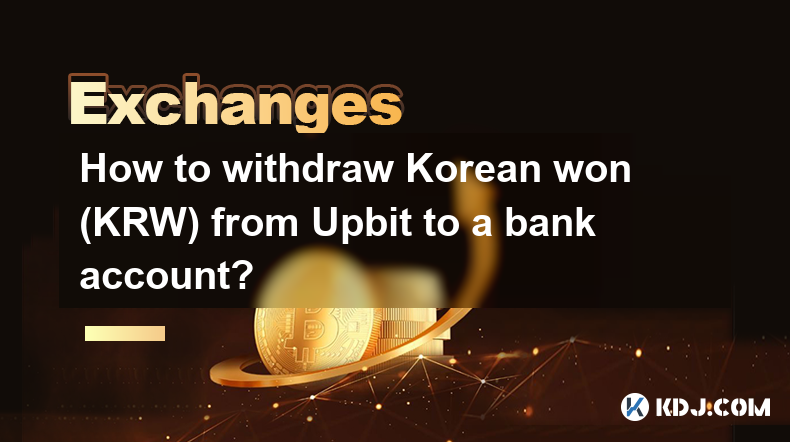
Withdrawing Korean won (KRW) from Upbit to a bank account is a straightforward process that involves a few key steps. This guide will walk you through each step to ensure you can successfully transfer your funds. Upbit is a popular cryptocurrency exchange in South Korea, and it supports withdrawals to local bank accounts. Let's delve into the detailed process.
Preparing for Withdrawal
Before initiating the withdrawal process, there are a few preparations you need to make. First, ensure that you have a verified Upbit account. Verification is necessary to comply with Know Your Customer (KYC) regulations and to enable withdrawals. You will also need to have a South Korean bank account linked to your Upbit account. If you haven't done this yet, you'll need to go through the process of linking your bank account.
- Log into your Upbit account.
- Navigate to the "My Assets" section.
- Ensure you have sufficient KRW in your Upbit wallet.
Linking Your Bank Account
If you haven't already linked your bank account to Upbit, you'll need to do this first. The process involves verifying your bank account through a simple deposit and withdrawal verification method.
- Go to the "Account" section and select "Bank Account".
- Click on "Add Bank Account".
- Select your bank from the list provided.
- Enter your bank account number and the name on the account.
- Complete the verification process by following the instructions provided by Upbit. This usually involves a small deposit into your bank account, which you will need to confirm on Upbit.
Initiating the Withdrawal
Once your bank account is successfully linked, you can proceed with the withdrawal. Here’s how you can do it:
- Go to the "My Assets" section again.
- Select "Withdraw" next to KRW.
- Enter the amount you wish to withdraw.
- Select the bank account you want to withdraw to from the dropdown menu.
- Review the withdrawal details carefully.
- Enter your password to confirm the withdrawal.
- Click on "Withdraw" to initiate the process.
Understanding Withdrawal Fees and Limits
It's important to be aware of the fees and limits associated with withdrawals from Upbit. Upbit charges a withdrawal fee for transferring KRW to your bank account. The fee amount can vary, so it's advisable to check the current fee structure on Upbit's fee page before initiating a withdrawal.
Additionally, there are daily withdrawal limits that apply to your account. These limits depend on your account's verification level. For example, a fully verified account may have a higher withdrawal limit compared to a partially verified account. Make sure to check your limits before proceeding with a withdrawal.
Tracking Your Withdrawal
After initiating the withdrawal, you can track its status to ensure it reaches your bank account successfully. Here’s how you can do it:
- Go to the "My Assets" section.
- Click on "Withdrawal History" to view the status of your withdrawal.
- Monitor the status until it shows as "Completed".
The withdrawal process typically takes 1-2 business days to reflect in your bank account. If you encounter any delays, you can contact Upbit's customer support for assistance.
Security Considerations
When withdrawing funds, it's crucial to prioritize security. Here are some tips to ensure your withdrawals are secure:
- Use strong, unique passwords for your Upbit account.
- Enable two-factor authentication (2FA) to add an extra layer of security.
- Be cautious of phishing attempts and never share your login details with anyone.
- Regularly monitor your account for any unauthorized activities.
Troubleshooting Common Issues
Sometimes, you might encounter issues during the withdrawal process. Here are some common problems and their solutions:
- Withdrawal is pending for a long time: Check the withdrawal history and contact Upbit support if the delay is unusual.
- Incorrect bank account details: Double-check your bank account information before initiating the withdrawal. If you've entered incorrect details, contact Upbit support immediately.
- Insufficient funds: Ensure you have enough KRW in your Upbit wallet before attempting a withdrawal.
FAQs
Q: Can I withdraw KRW to a foreign bank account?
A: No, Upbit only supports withdrawals to South Korean bank accounts. If you need to transfer funds internationally, you will first need to withdraw to a local bank account and then use a separate service for international transfers.
Q: How long does it take for the withdrawn amount to reflect in my bank account?
A: Typically, it takes 1-2 business days for the withdrawn amount to reflect in your bank account. However, this can vary based on your bank's processing times.
Q: What should I do if my withdrawal is rejected?
A: If your withdrawal is rejected, check the reason provided by Upbit. Common reasons include insufficient funds, incorrect bank details, or exceeding withdrawal limits. Resolve the issue and try again. If you're still having trouble, contact Upbit's customer support.
Q: Is there a minimum amount I can withdraw?
A: Yes, Upbit has a minimum withdrawal amount for KRW. You can find the current minimum amount on their fee page. Ensure you meet this requirement before initiating a withdrawal.
Disclaimer:info@kdj.com
The information provided is not trading advice. kdj.com does not assume any responsibility for any investments made based on the information provided in this article. Cryptocurrencies are highly volatile and it is highly recommended that you invest with caution after thorough research!
If you believe that the content used on this website infringes your copyright, please contact us immediately (info@kdj.com) and we will delete it promptly.
- Litecoin Breakout Watch: What Traders Need to Know Now
- 2025-07-06 16:50:13
- Bitcoin, Solana, Ethereum: Decoding the Latest Buzz on the Blockchain
- 2025-07-06 16:50:13
- Widnes Resident's 50p Could Be Your Ticket to Easy Street: Rare Coin Mania!
- 2025-07-06 16:55:13
- Bitcoin, Solaris Presale, and Token Rewards: What's the Buzz?
- 2025-07-06 16:55:13
- Ethereum Under Pressure: Price Drop Amid Global Uncertainties
- 2025-07-06 17:00:13
- XRP, SEC Case, and Prosperity: A New Era for XRP Holders?
- 2025-07-06 17:10:13
Related knowledge
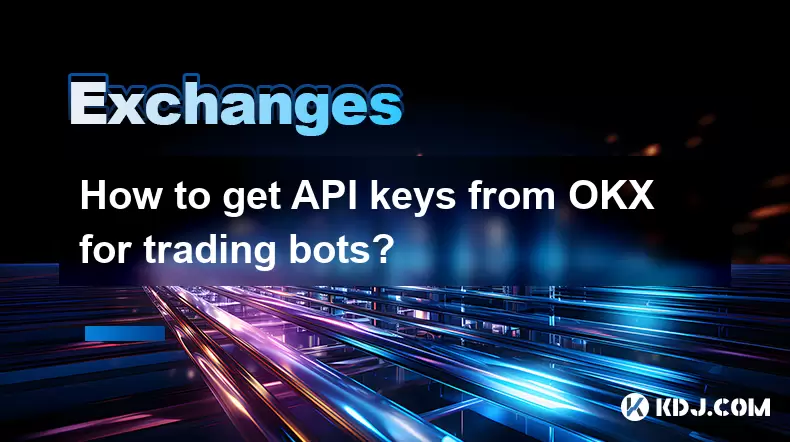
How to get API keys from OKX for trading bots?
Jul 03,2025 at 07:07am
Understanding API Keys on OKXTo interact with the OKX exchange programmatically, especially for building or running trading bots, you need to obtain an API key. An API (Application Programming Interface) key acts as a secure token that allows your bot to communicate with the exchange's servers. On OKX, these keys come with customizable permissions such ...
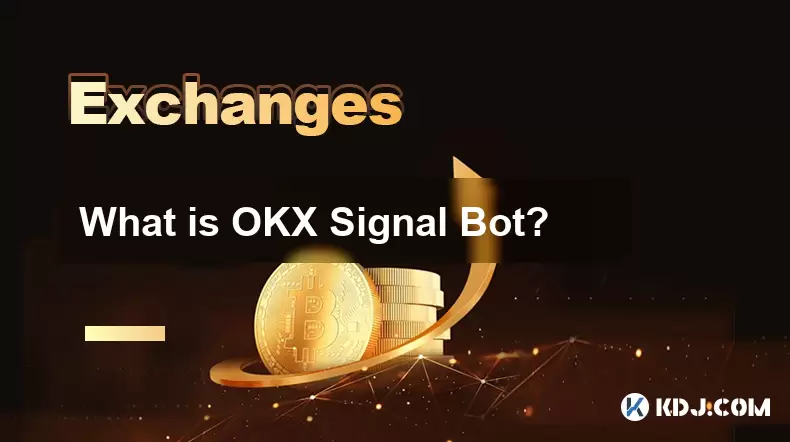
What is OKX Signal Bot?
Jul 02,2025 at 11:01pm
Understanding the Basics of OKX Signal BotThe OKX Signal Bot is a feature within the OKX ecosystem that provides users with automated trading signals and execution capabilities. Designed for both novice and experienced traders, this bot helps identify potential trading opportunities by analyzing market trends, technical indicators, and historical data. ...
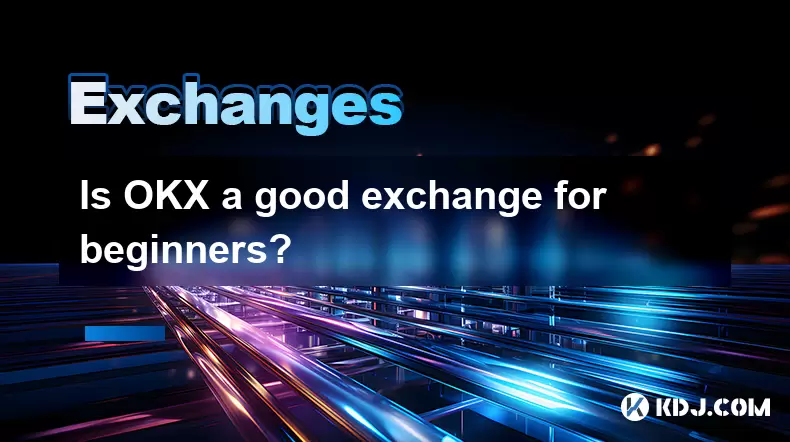
Is OKX a good exchange for beginners?
Jul 03,2025 at 05:00pm
What Is OKX and Why Is It Popular?OKX is one of the leading cryptocurrency exchanges globally, known for its robust trading infrastructure and a wide variety of digital assets available for trading. It supports over 300 cryptocurrencies, including major ones like Bitcoin (BTC), Ethereum (ETH), and Solana (SOL). The platform has gained popularity not onl...
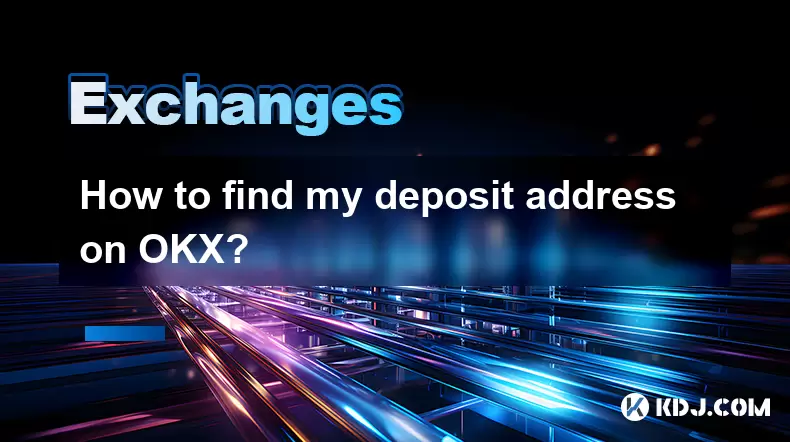
How to find my deposit address on OKX?
Jul 06,2025 at 02:28am
What is a Deposit Address on OKX?A deposit address on OKX is a unique alphanumeric identifier that allows users to receive cryptocurrencies into their OKX wallet. Each cryptocurrency has its own distinct deposit address, and using the correct one is crucial to ensure funds are received properly. If you're looking to transfer digital assets from another ...
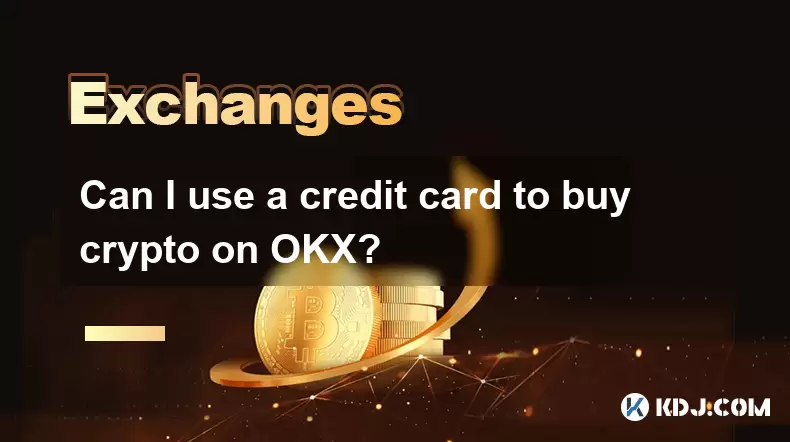
Can I use a credit card to buy crypto on OKX?
Jul 04,2025 at 04:28am
Understanding OKX and Credit Card PaymentsOKX is one of the leading cryptocurrency exchanges globally, offering a wide range of services including spot trading, derivatives, staking, and more. Users often wonder whether they can use a credit card to buy crypto on OKX, especially if they are new to the platform or looking for quick ways to enter the mark...
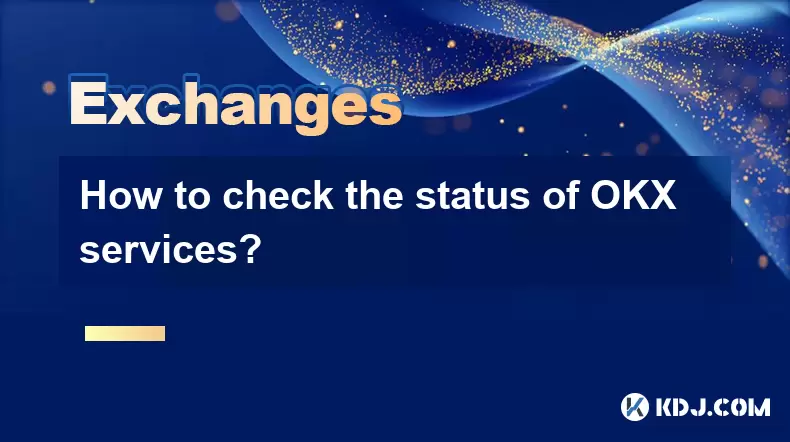
How to check the status of OKX services?
Jul 02,2025 at 11:14pm
What is OKX, and Why Checking Service Status Matters?OKX is one of the world’s leading cryptocurrency exchanges, offering services such as spot trading, futures trading, staking, and more. With millions of users relying on its platform for daily transactions, it's crucial to know how to check the status of OKX services. Downtime or maintenance can affec...

How to get API keys from OKX for trading bots?
Jul 03,2025 at 07:07am
Understanding API Keys on OKXTo interact with the OKX exchange programmatically, especially for building or running trading bots, you need to obtain an API key. An API (Application Programming Interface) key acts as a secure token that allows your bot to communicate with the exchange's servers. On OKX, these keys come with customizable permissions such ...

What is OKX Signal Bot?
Jul 02,2025 at 11:01pm
Understanding the Basics of OKX Signal BotThe OKX Signal Bot is a feature within the OKX ecosystem that provides users with automated trading signals and execution capabilities. Designed for both novice and experienced traders, this bot helps identify potential trading opportunities by analyzing market trends, technical indicators, and historical data. ...

Is OKX a good exchange for beginners?
Jul 03,2025 at 05:00pm
What Is OKX and Why Is It Popular?OKX is one of the leading cryptocurrency exchanges globally, known for its robust trading infrastructure and a wide variety of digital assets available for trading. It supports over 300 cryptocurrencies, including major ones like Bitcoin (BTC), Ethereum (ETH), and Solana (SOL). The platform has gained popularity not onl...

How to find my deposit address on OKX?
Jul 06,2025 at 02:28am
What is a Deposit Address on OKX?A deposit address on OKX is a unique alphanumeric identifier that allows users to receive cryptocurrencies into their OKX wallet. Each cryptocurrency has its own distinct deposit address, and using the correct one is crucial to ensure funds are received properly. If you're looking to transfer digital assets from another ...

Can I use a credit card to buy crypto on OKX?
Jul 04,2025 at 04:28am
Understanding OKX and Credit Card PaymentsOKX is one of the leading cryptocurrency exchanges globally, offering a wide range of services including spot trading, derivatives, staking, and more. Users often wonder whether they can use a credit card to buy crypto on OKX, especially if they are new to the platform or looking for quick ways to enter the mark...

How to check the status of OKX services?
Jul 02,2025 at 11:14pm
What is OKX, and Why Checking Service Status Matters?OKX is one of the world’s leading cryptocurrency exchanges, offering services such as spot trading, futures trading, staking, and more. With millions of users relying on its platform for daily transactions, it's crucial to know how to check the status of OKX services. Downtime or maintenance can affec...
See all articles





















